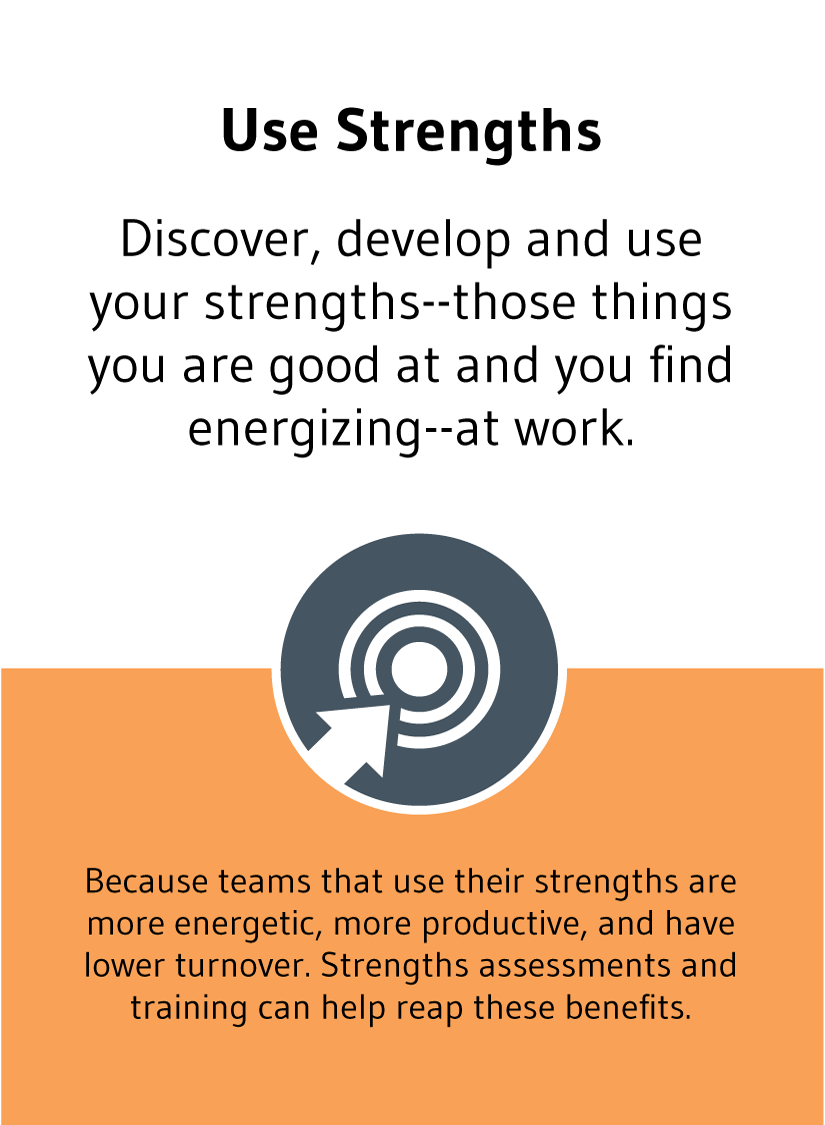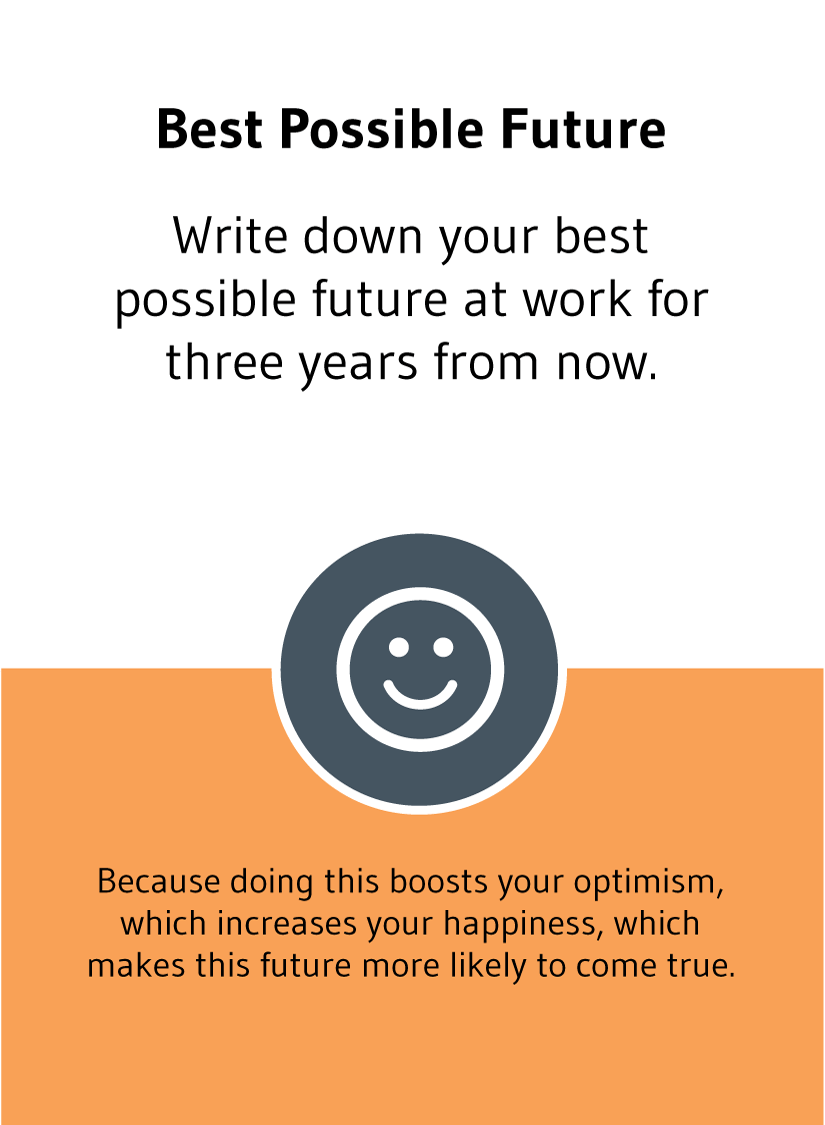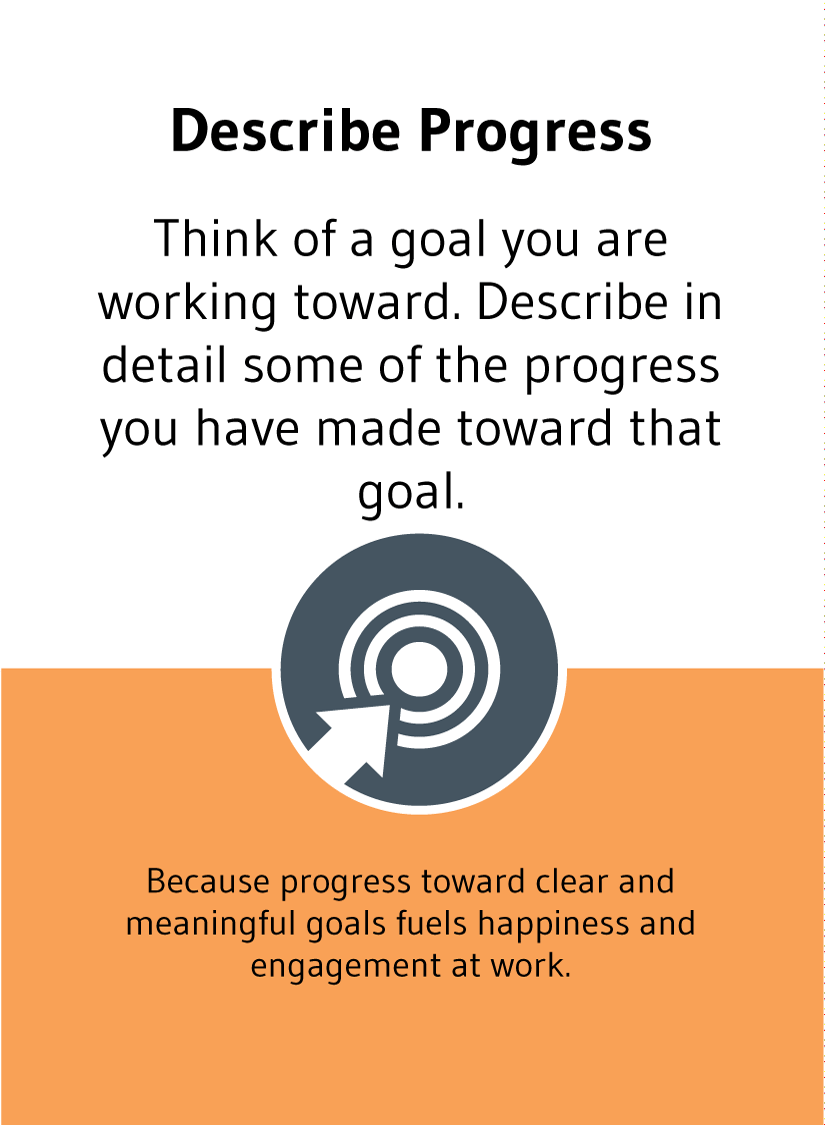
What Does Happiness Have to Do with Employee Engagement?
Should you be more focused on happiness or engagement at work? And is it possible to achieve both at the same time?
Some people claim that happiness and employee engagement have nothing to do with each other. For example, they point out that a person can feel very happy chatting by the water cooler, or eating bonbons, but not be working very hard. And they argue that someone can be highly engaged—giving their best effort at work—yet be miserable. So they consider happiness and engagement to be on completely separate tracks, and often focus solely on engagement.
It’s a combination of both
At Happy Brain Science, we see it differently. Scientists define happiness to include positive emotions as well as a longer-lasting sense of meaning and satisfaction with life. Scientists typically use the phrase “subjective well-being” to describe this mix. (Research suggests that depending on the culture you were raised in, you might call a deep, meaningful, satisfying positive state “joy” instead of happiness. Whatever you prefer to call it, we’re talking about that deep, lasting mix.) We’ll call it happiness from this point forward in this article. Whatever it’s called, it’s made up, in part, of meaning and satisfaction.
To get a sense of meaning and satisfaction at work, you have to engage. You have to work hard at something you care about. In our science-based view, happiness and engagement overlap significantly. In fact, with the right approach, it’s rare to be engaged without increasing your happiness—and vice-versa. We’re delighted to share some easy-to-apply techniques that will help you drive both in your organization.
How to Choose Happiness at Work
We recommend the following activities—from our Choose Happiness @ Work card game and facilitation tool—to boost both happiness and engagement:
Truly Tap Strengths
 “Teams that use their strengths are more energetic, more productive, and have lower turnover. Strengths assessments and training can help reap these benefits.”
“Teams that use their strengths are more energetic, more productive, and have lower turnover. Strengths assessments and training can help reap these benefits.”
While most of us can’t demand to work only on projects or tasks that use our strengths, there is an advantage to tapping our strengths in the workplace.
For example, I love organizing and coordinating tasks. I’m also creative when it comes to the written word. However, I have no talent in the visual arts. Of course, like all of us, I can embrace a growth mindset and develop new skills. But part of what makes something a strength is that someone can do it well and also feel energized by it. So, sure, I can create an image in Canva when needed—but it takes me a lot of time to complete, it’s not my best work, and at the end, I feel drained rather than energized.
As a result of “testing and learning” about my strengths at Happy Brain Science, I’ve been put in charge of organizing our blog posting plan and coordinating the details of Scott’s speaking engagements. Recently, I’ve also taken the lead on our July and August newsletters. The advantage of this setup is that I not only get to contribute my best work and improve on my strengths, but I truly feel energized and motivated by what I’m doing.
What about you? How can you choose to focus on strengths instead of weaknesses at work?
Best Possible Future
 “Write down your best possible future at work for three years from now. Because doing this boosts your optimism, which increases your happiness, which makes this future more likely to come true.”
“Write down your best possible future at work for three years from now. Because doing this boosts your optimism, which increases your happiness, which makes this future more likely to come true.”
Are you familiar with a vision board? A vision board is a visual representation of the goals that you want to achieve in the near future. For those of us who are not-so-blessed in the visual arts, the Best Possible Future exercise is a written counterpart that focuses on what we want our work life to look like in 3 years’ time.
Sonja Lyubomirski, the author of The How of Happiness, shares the advantage of doing this exercise:
“There are many ways to practice optimism, but the one that has been empirically shown to enhance well-being is the original Best Possible Selves Diary method. To try it out, sit in a quiet place, and take twenty to thirty minutes to think about what you expect your life to be one, five, or ten years from now. Visualize a future for yourself in which everything has turned out the way you’ve wanted. You have tried your best, worked hard, and achieved all your goals. Now write down what you imagine.”
Want to know a trick to use as you’re describing your best possible future? Write down what you envision in the present tense (not the future tense). Why? Because to some extent, our brain has a hard time telling the difference between visualizations and real life. We can use that feature of our brain to help turn our goals into reality.
Progress Indicator
 “Progress toward clear and meaningful goals fuels happiness and engagement at work.”
“Progress toward clear and meaningful goals fuels happiness and engagement at work.”
We’ve all heard the quote, “It’s about the journey, not the destination.” However, at work, we’re often focused on end goals. (And if we don’t feel an affinity for those end goals, it can increase the risk of chronic stress and burnout.)
Harvard Professor Teresa Amabile and her team performed a study that demonstrates the power of progress. Making progress toward clear and meaningful goals fuels “quality inner work life,” as she calls it. What does this mean? It means that while the end goal is important, we should constantly set up milestones/checkpoints and celebrate the small, meaningful wins of the team.
In my day job as a project manager, one of my teams provides production support. During the month of June, we were swamped with issues, which caused stress and low morale within the team. Taking a leaf out of Prof. Amabile’s book, I created a “bug burndown chart” that showed how many tickets we had received, how many issues we managed to close in a day, and how many were waiting for feedback from our counterpart. Every day, I updated the chart and shared it with the team—and when we reached our target level of bugs, we celebrated with a pizza party during one of breaks.
While there’s a general expectation that we need to keep bug counts low, doing this activity helped my team see their progress and feel motivated to keep going. And when we reached our goal, we recognized our cumulative progress by taking a break from our highly-stressful job to celebrate (and reinforce) our success.
In Summary
Employee engagement and happiness are not the same thing.
But if you define happiness the way scientists do—as “subjective well-being,” which includes a long-term sense of meaning and satisfaction in life—you can enhance both through the same interventions. The suggests above (as well as many other activities) can boost happiness and engagement at the same time—for you, and/or those you lead at work.
Have you tried any of the above? How did they work for you? What else has worked to simultaneously boost morale and motivation at work? Thanks in advance for letting us know with your comments.